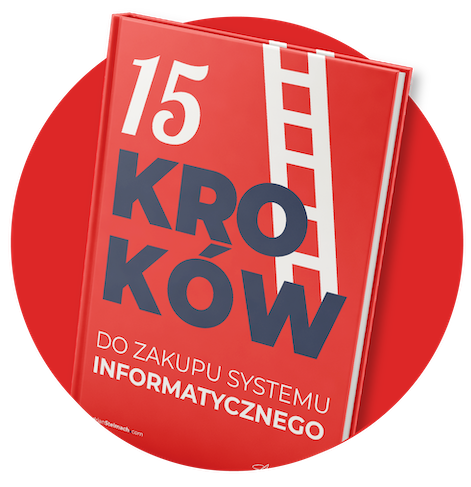
NEWSLETTER
Wpisz swój adres e-mail i zyskaj e-booka
Bez niechcianej poczty ani reklam
Tylko merytoryczne treści z obszaru digitalizacji produkcji

Kaizen is a Japanese philosophy that literally means “change for the better.” In business practice, it is an approach of small, consistent steps. The Kaizen method doesn’t like revolutions and big projects, instead focusing on small improvements made every day.
As a result, employees do not feel overwhelmed by the enormity of change, and the company gains a culture of continuous improvement. This is what distinguishes Kaizen philosophy from one-off initiatives – here the process does not end with implementation, but continues continuously. For this reason, Kaizen is a good cousin of Lean Management.

In many factories, the Kaizen method exists only in theory. Urns for ideas stand, forms and pens hang next to them, and the assumption is that “someday” someone will review them. Operators know the system is there, but they don’t believe anything comes of it. Therefore, they stop submitting ideas for improvement, and continuous improvement becomes an empty slogan.
Kaizen is not an office tool or another Excel table. It’s a conversation at the gemba – at the very center of operations, where work actually happens. It’s only when you’re in touch with the day-to-day problems and suggestions of employees that you can make changes that make real sense.
Many CI (Continuous Improvement) managers say bluntly, “We know it, but we don’t have the clout.” On the one hand, they see problems that require intervention. On the other – their recommendations often “bounce off the wall” because no one implements them. It also happens that the CI department prepares a project without consulting the hall staff. Then the solution is elegant on paper, but in practice it turns out to be detached from the realities of work.
Thus, the CI manager finds himself between a hammer and an anvil, helpless in the face of a lack of support from above and overwhelmed by a lack of commitment from below. Without real dialogue, no improvement program stands a chance.
Resistance to change takes many forms. Sometimes it is loud and obsequious: “I won’t!” Other times it pretends that the change is not there – like a child who closes his eyes, believing that then the monster from the closet will disappear. Sometimes he takes the form of a saboteur: lack of data, perverse answers, playing for time. The most insidious, however, is silent resistance – the lack of feedback gives the leader the impression that everything is going according to plan. Meanwhile, his people have quietly backed off.
It is important to remember: resistance is not ill will. It is a natural human defense mechanism against a breach of stability. The sooner a leader understands this psychological mechanism, the easier it will be for him to lead his team through the change.
I have encountered the statement that one company does not have an organizational culture. I disagree with this. Every organization has a culture – the question is what culture it is. If an employee can’t make it clear what the rules are in a manufacturing plant, it means that the company’s culture is reduced to empty slogans in an advertising brochure and colorful slogans on a website.
In practice, organizational culture is built by the day-to-day behavior of the staff: the way the leader talks to the team, how he responds to errors, whether he actually encapsulates the topics raised by the gemba people. Without this, even the best-sounding CI program will remain an empty promise.
Sometimes employees’ resistance is a product of their imagination. Yes, imagination, because when we don’t know something, we create visions for ourselves that don’t always have much to do with reality.
Take the example of a company that was moving its headquarters 30-40 kilometers away. For management, the change was an opportunity for better conditions. For employees, it meant uncertainty, a longer commute, unanswered questions. A slide presentation alone did not calm the situation. Something else worked: a joint trip to the new location, a walk through the future offices, a chance to see the hall plans. This was not a PR campaign, but a gesture of respect. People didn’t have to accept the decision, but they could get used to it.

Get 5 chapters of the book for free!
Join the newsletter and gain access to 40% of the book
“15 Steps to Buying an Information System“.
Many manufacturing companies are investing in new systems. They end up boasting a whole host of new solutions to no avail. Paradoxical, yet I know of many organizations whose overabundance of systems hinders continuous improvement. Every need ends up with a new application: one for instructions, another for tasks, a third for communication. The result? Chaos and frustration.
Meanwhile, less is more. One consistent communications stack (e.g., Teams), ERP for business, MES for execution – and consistency in using that set. Before you deploy another application, check to see if you really can’t leverage existing tools.
Kaizen works best when it becomes a daily ritual rather than a one-time special project. A good example is short periodic meetings on the shop floor:
It is such small rituals that build the belief in employees that their voice matters.

If your company’s Kaizen system has stalled, you don’t have to eliminate it – just revive it. Three principles are key:
On top of that, there is an incentive component – small team rewards for closed improvements and a monthly meeting to show what has actually been improved. It’s a simple mechanism that turns the “urn” into a real engine for change.
But are rewards enough to get Kaizen going?
No. They work temporarily, but without the presence of a leader on the gemba and the quick closure of topics, the program quickly turns into a bureaucracy.
Example: lack of communication means damaged equipment
The story of the broken operator panels shows how a lack of information leads to sabotage – often unwittingly. Employees didn’t understand why the devices appeared, so they treated them as a threat. This was not ill will, but a natural defense mechanism.
That’s why every CI program should start not with a spreadsheet, but with a stakeholder map and… a conversation. The simplest question, “who should know about this?” can save hundreds of thousands of zlotys in losses.
Kaizen is therefore not a one-time spurt, but a ritual ingrained in the daily life of a manufacturing company. If leaders show that they are listening and responding, the small steps method becomes a viable engine of change. For me, Kaizen is about development, but for you?